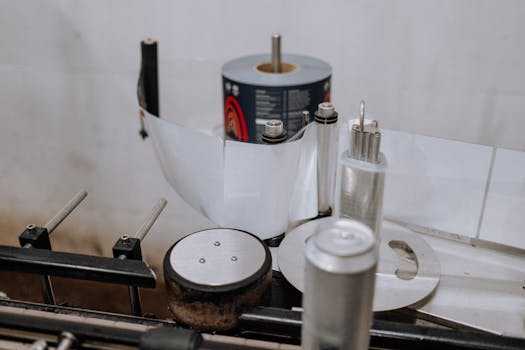
**
The passing of a spiritual leader as revered as the Dalai Lama inevitably sparks global interest, but the Tibetan Buddhist tradition surrounding the selection of his successor adds a layer of intrigue often described as mystical. The process of finding the reincarnation of the Dalai Lama is a complex blend of religious ritual, political maneuvering, and deeply held spiritual beliefs. This intricate procedure, steeped in centuries of tradition, attracts worldwide attention and fuels endless speculation about the identity of the 15th Dalai Lama.
The Dalai Lama's Reincarnation: A Deep Dive into Tibetan Buddhist Beliefs
The concept of reincarnation is central to Tibetan Buddhism, a belief system that posits the soul's continuous cycle of death and rebirth. The Dalai Lama, considered the spiritual leader of Tibetan Buddhism, is believed to be a tulku – a reincarnated lama. This belief is rooted in the idea that highly realized beings can choose to return to the earthly plane to continue their spiritual work. Finding the next Dalai Lama is thus not a matter of mere succession but a profound spiritual quest. Understanding this belief system is crucial to understanding the entire process.
Key Aspects of the Reincarnation Process:
- Divine Signs and Omens: The search begins with meticulous observation for auspicious signs and omens believed to be divinely ordained. These could include dreams, natural phenomena, or the discovery of unusual objects. These indicators supposedly point towards the location of the reincarnated Dalai Lama.
- The Search Committee: A highly respected group of Tibetan Buddhist monks and lamas forms the Search Committee. This committee, guided by the Kashag (the Tibetan government-in-exile), plays a vital role in identifying potential candidates based on these divine signs and the previous Dalai Lama's instructions.
- The Golden Urn: A crucial part of the process involves the use of a golden urn. This ornate urn contains small slips of paper, each bearing the name of a potential candidate. The drawing of a name from this urn serves as a significant step in the selection procedure, further bolstering the mystical nature of the process.
- Recognition of the Reincarnate: The Search Committee, guided by spiritual insight and often involving detailed interviews and tests, seeks to identify the child believed to be the reincarnation of the previous Dalai Lama. The child is identified not only through auspicious signs but also through their demonstrated spiritual aptitude and knowledge.
The Political and Geopolitical Implications of the Search
The search for the next Dalai Lama is not without its political complexities. China, which claims sovereignty over Tibet, has consistently asserted its right to influence or even control the selection process. This creates a delicate situation, pitting religious tradition against geopolitical power. The 14th Dalai Lama's position in exile in Dharamshala, India, further complicates matters. The Chinese government has repeatedly stated its intention to approve the selection process, increasing the international tension and scrutiny surrounding the event.
Challenges and Concerns Surrounding the Process:
- Chinese Interference: China's attempts to influence or control the process are a major source of concern for many Tibetan Buddhists and supporters of the Dalai Lama. Their influence casts a shadow on the authenticity and spiritual legitimacy of the selection.
- Maintaining Tradition: Balancing the traditional methods of finding a reincarnation with the modern realities of the political landscape is an ongoing challenge. The tension between tradition and political pressure is a continuous concern.
- Authenticity and Legitimacy: The possibility of Chinese interference raises concerns about the authenticity and legitimacy of the chosen reincarnation. This uncertainty has the potential to create divisions within the Tibetan Buddhist community.
The Future of the Dalai Lama's Reincarnation and the Tibetan Buddhist Tradition
The selection of the next Dalai Lama will be a defining moment for Tibetan Buddhism and its global community. Regardless of the process’s outcome and the potential for political interference, the search itself highlights the enduring power of belief, spiritual tradition, and the unwavering faith in the concept of reincarnation.
Speculation and Future Predictions:
- The Role of Technology: While traditional methods remain central, some speculate about the role technology might play in the future searches for reincarnations. This could involve using advanced techniques to identify potential candidates.
- The Impact of Globalization: The global reach of the Dalai Lama’s influence means the search for the next Dalai Lama will undoubtedly attract international attention and scrutiny. This global interest will continue shaping the discussions and debates around the selection process.
- Maintaining Unity: The continued pursuit of unity within the Tibetan Buddhist community is critical, especially given the potential for disagreements and disputes over the legitimacy of the chosen reincarnation.
The search for the next Dalai Lama is more than just a religious event; it's a significant historical moment with global implications. It is a captivating example of the intersection between ancient spiritual traditions and the complexities of modern geopolitics. The process remains a source of both wonder and concern, highlighting the ongoing tension between faith, politics, and the enduring mystery of reincarnation. The world watches with bated breath as this mystical and deeply significant process unfolds. The legacy of the Dalai Lama and the future of Tibetan Buddhism are inextricably linked to the successful and peaceful resolution of this complex and important quest.




















